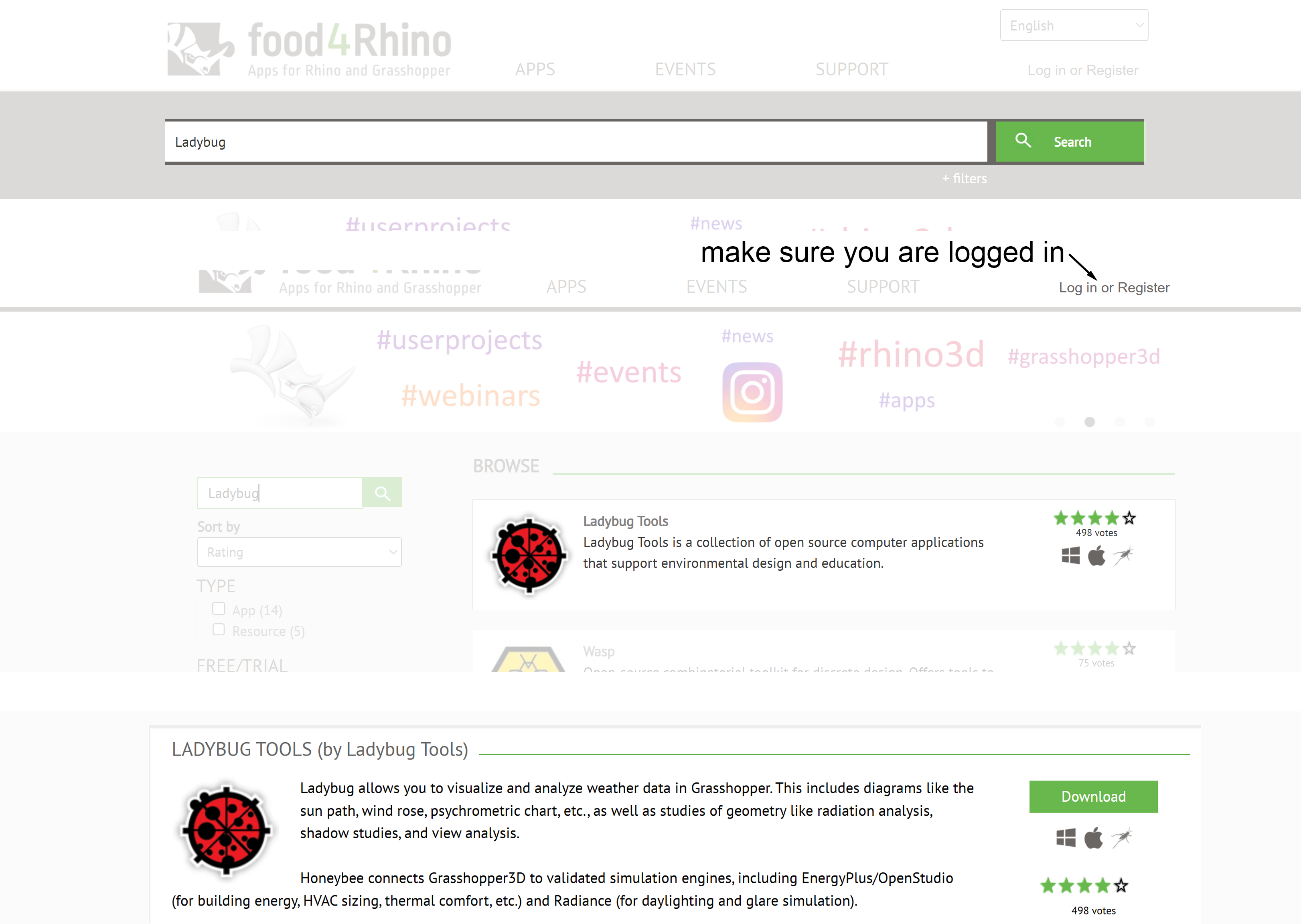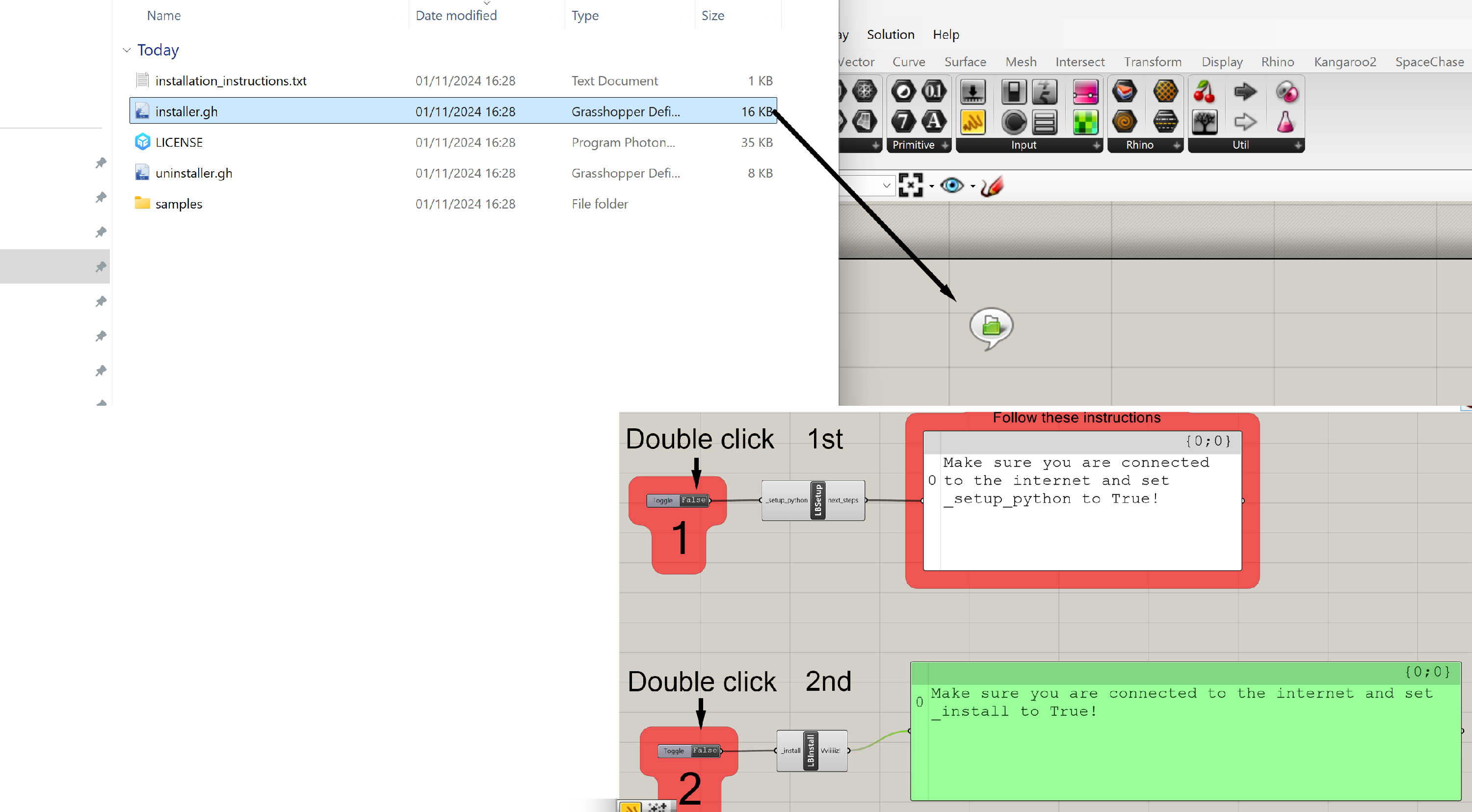Installing the Ladybug Plugin for Rhino 8
-
Intro
-
Installation Steps
-
Conclusion
Information
| Primary software used | Ladybug |
| Course | Installing the Ladybug Plugin for Rhino 8 |
| Primary subject | Analysis & simulation |
| Secondary subject | Climate analysis |
| Level | Beginner |
| Last updated | December 6, 2024 |
| Keywords |
Responsible
| Teacher | |
| Faculty |
Installing the Ladybug Plugin for Rhino 8 0/2
Installing the Ladybug Plugin for Rhino 8
This tutorial explains how to download and install the Ladybug plugin for Rhino 8 – Grasshopper. The ladybug plugin supports environmental design and analysis.
Installing the Ladybug Plugin for Rhino 8 1/2
Installation Stepslink copied
Installing Ladybug plugin for Grasshopper.
Sometimes the standard Grasshopper library does not support specific functions that you need. On the website Food4Rhino there are a large number of plugins you can download not only for Rhino but also Grasshopper. This tutorial will look at how to download and install the ladybug plugin for Grasshopper
Downloading the Ladybug grasshopper plugin
Important: make sure you have Rhino 8 installed.

Most plugins for Grasshopper can be downloaded from Food4Rhino, a website with open-source plugins for Rhino and Grasshopper. Most plugins can be installed using the following steps. However, it is always recommended to take a look at the instructions in the description of the plugin.
- Browse for http://www.food4rhino.com
This step-by-step instruction is only applicable on Windows PC.
Use the search option on the Foo4Rhino website to find the Ladybug plugin in. Once you found the correct page with the plugin click on the Ladybug icon to open the Ladybug download page. To download the plugin, you first need to login or if you haven’t registered yet you will have to use your TU mail address. This will redirect you to the TU inlog site.
Once you are logged in you can download the Zip file

The ZIP file will be placed in your download directory. To make the plugin work it has to be extracted from the ZIP file. The ZIP file contains not only the plugin but also several example file. Extract all these files.

Important: Make sure you extract the files first . Don’t use the files directly from the ZIP file.
Once the files are extracted you can use them to install the Ladybug plugin.
Uninstall old version of Ladybug
Important: if you have installed an old version of Ladybug you have to uninstall it first. This is simple to do. Make sure you have the latest version of Ladybug installed. The plugin is updated regularly. If you have an old version some of the components in the assignment file will not work.

Go to the directory where you extracted the ZIP file. There is an Uninstaller.gh file which you can drag onto your Grasshopper canvas. The Uninstaller.gh file opens in Grasshopper and by simple double clicking the toggle parameter and thereby changing the function from false to true the ladybug plugin is uninstalled. If you double click it looks like nothing happens, but is uninstalling, wait a minute and it will confirm the uninstallation. Restart Rhino to finalize the uninstall.
Installing the Ladybug plugin
There is a very simple method of installing the plugin, similar to the uninstall option. Open Rhino and Grasshopper. Go to the directory where you extracted the ZIP file. Select the Installer.gh file and drag it to the Grasshopper canvas and drop it there. The Grasshopper file contains two components for installation. Double click the top toggle first, make sure you are connected to the internet. This will install Python programming software which ladybug uses. If you double click it looks like nothing happens, but it is installing, wait a minute and it will confirm the installation of the Python part. Now double click the second toggle, again wait a minute. Once done, restart Rhino and the Ladybug tab should be available in Grasshopper.

After successful installation and restarting Rhino, a new tab in Grasshopper will appear which will have all the component from Ladybug.

Installing the Ladybug Plugin for Rhino 8 2/2
Conclusionlink copied
Now you have successfully installed Ladybug!
Food4Rhino contains a large amount of plugins which are often free to download. These are plugins are developed by a community of researchers, universities, companies, specialists and enthusiasts. Ladybug is a high-quality plugin which is widely used in architectural and urban design. The wide range of analysis options related to light, weather, energy and human comfort are often used in the early stages of design, the stage where they can have the biggest impact on enhancing the design. It is an important capability to enhance the design in relation to sustainability.
Learn how to use Ladybug for climate analysis and design optimization
Write your feedback.
Write your feedback on "Installing the Ladybug Plugin for Rhino 8"".
If you're providing a specific feedback to a part of the chapter, mention which part (text, image, or video) that you have specific feedback for."Thank your for your feedback.
Your feedback has been submitted successfully and is now awaiting review. We appreciate your input and will ensure it aligns with our guidelines before it’s published.
